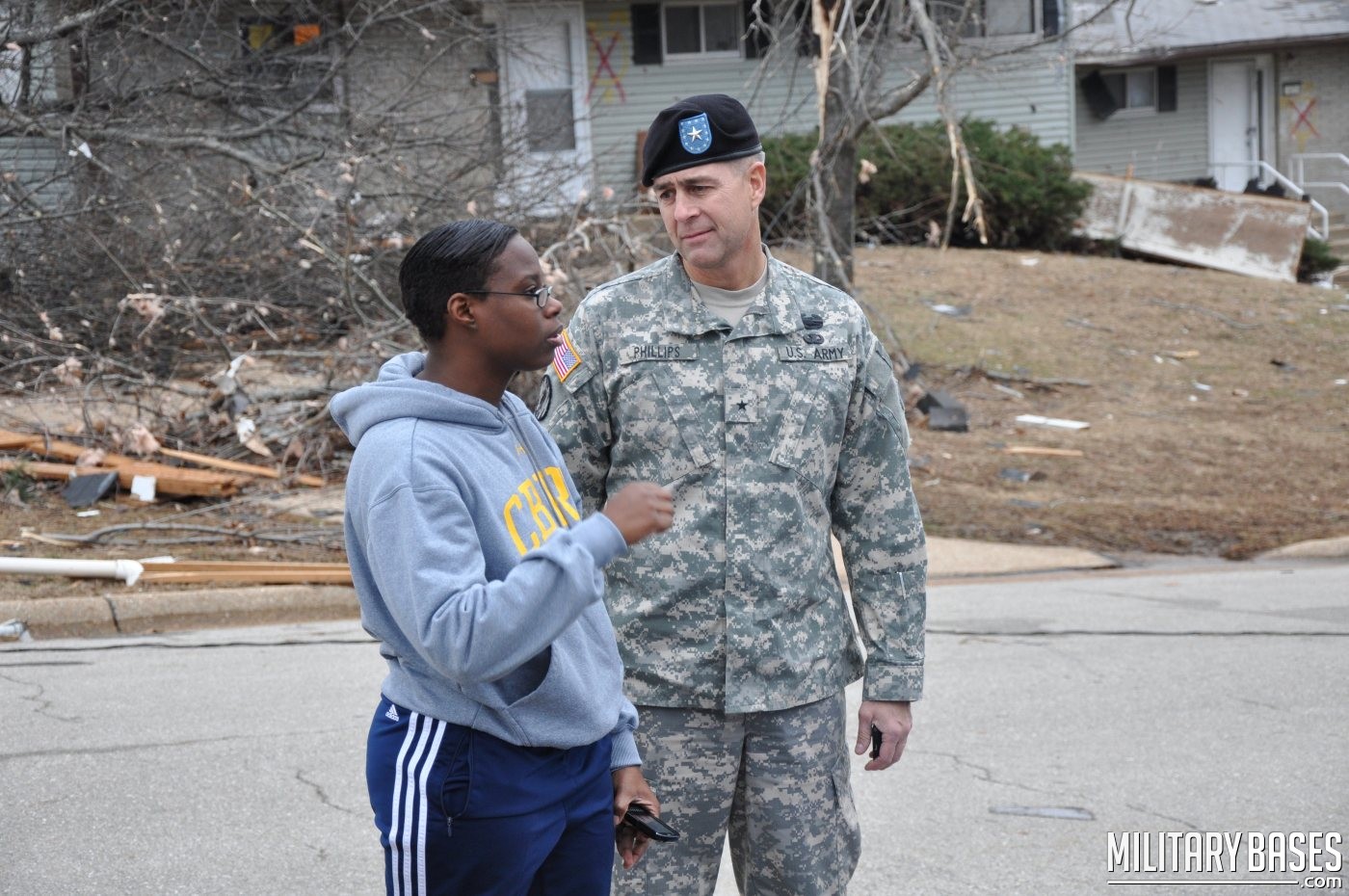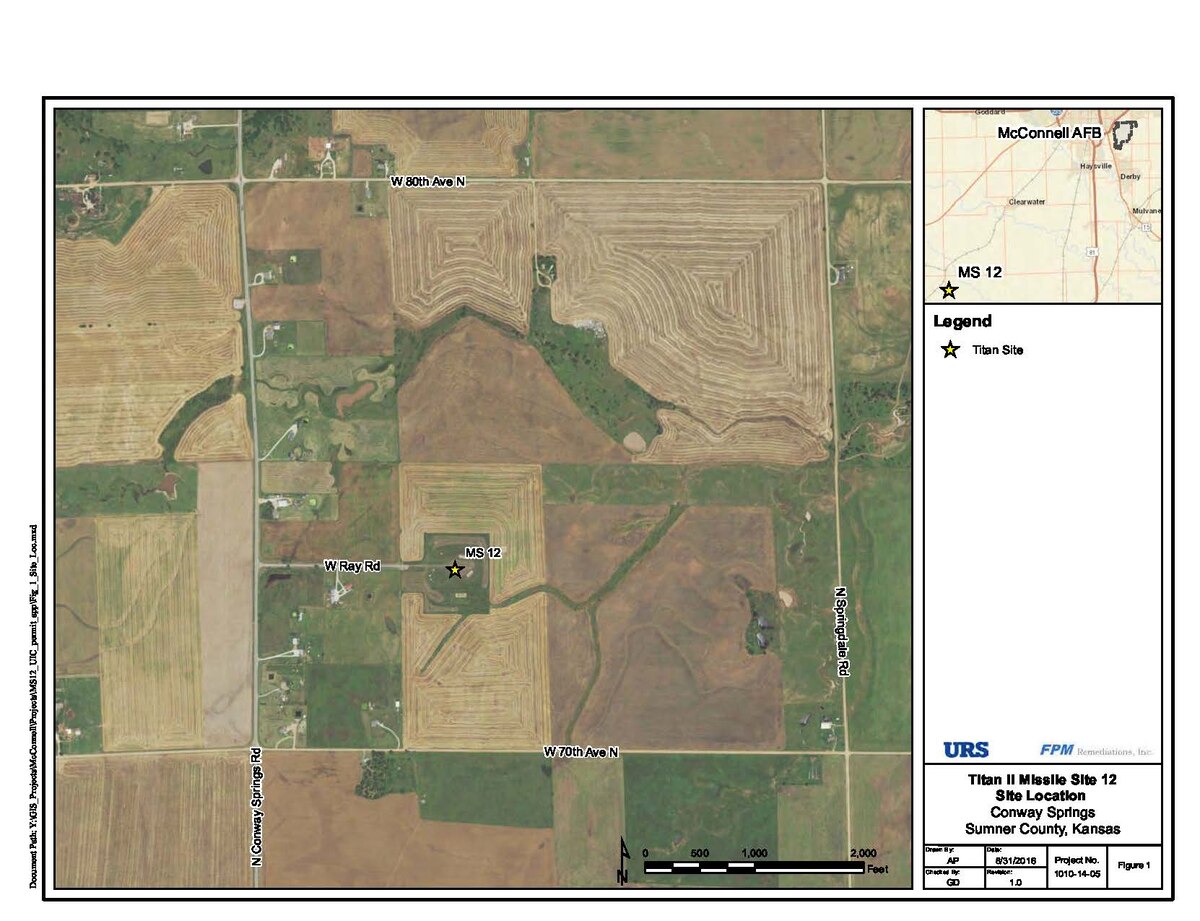Kansas Military Bases - US service members across the country may be exposed to environmental hazards while stationed at certain military bases. Many of the toxic chemicals present in these bases are linked to health problems. If you have a post-service health condition, you may be eligible for disability compensation from the Department of Veterans Affairs.
Here's what veterans need to know about potential toxic exposures on US military bases and filing disability claims for VA benefits.
Kansas Military Bases
The Environmental Protection Agency (EPA) launched its "Superfund" program in 1980 when Congress enacted the Comprehensive Environmental Response, Compensation and Liability Act (CERCLA). This program is an attempt to clean up land that the EPA determines is contaminated with hazardous waste and poses a risk to human health and/or the environment. Superfund sites can be found all over the world, as the United States has a presence in many countries through private companies, governments, and military programs. There is a complex evaluation process to determine if a site should be considered a superfund site. The test involves looking at the type of toxin. whether the poison is found in soil, water, air, or sediment; And what is the cleaning level of the existing site. The main toxins tested by the EPA are asbestos, dioxins, lead, polychlorinated biphenyls (PCBs) and radiation.
Special Report: Ambushed At Home: Lead Poisoning On Us Bases
The hypothetical scenario is that VA is a health problem associated with certain types of military service. For example, the VA estimates that some Vietnam War veterans with certain conditions, such as chronic B-cell leukemia and non-Hodgkin's lymphoma, were exposed to Agent Orange. This means they are automatically eligible for disability benefits. The VA has similar presumptions for Gulf War veterans.
The VA has already approved some discretionary benefits for veterans stationed at Fort McClellan, Alabama, and Camp Lejeune, North Carolina, from time to time. Veterans placed in these bases could be exposed to highly toxic substances from contaminated water, which can have adverse health effects. There are also cases of veterans known as "Atomic Vets" who experience certain forms of radiation exposure. Veterans stationed at facilities registered as EPA Superfund Cleanup sites may file direct service-connection claims as long as they can demonstrate service-connected exposures.
The EPA currently has 130 US-based military installations and major fund locations listed. Below is a list of major military bases by country, along with a list of the poisons associated with each facility.
There are several factors that the VA will consider when determining eligibility for compensation based on toxic exposure. In most of these areas, exposure to veterans is small based on the veteran's occupation, location, and whether specific contaminants have been directly handled. In addition, most of the bases were free of contamination except for certain periods. And although not all members of the service are shown, if you have been sent to any of these benefits and you have a disease related to one of the poisons, it is a good idea to check with your health provider about the possible connection and filing. claim for compensation. For a complete list, go to the EPA Superfund website.
Voters In 5 Of 8 Iowa Counties Pass Ems Essential Funding
Cyanides, phenols, pesticides, herbicides, chlorinated hydrocarbons, petroleum hydrocarbons, solvents, acids, chelating agents, asbestos, creosote, -lead, thallium, antimony and chromium.
Pesticides, alpha-chlordane, benzoapyrene, cesium-137, chromium, cobalt-60, dibenzo (A, H) anthracene, dieldrin, gamma-chlordane, heptachlor epoxide, PCB, radium-226, strontium-9238 and u.
Jet fuel, trichlorethylene (TCE), pesticides and nitrates, total petroleum hydrocarbons, dioxins, construction waste, medical waste, pesticides, semi-volatile organic compounds and various of inorganic compounds.

Petroleum fuels, pesticides, heavy metals (eg lead and zinc), polychlorinated biphenyls (PCBs) or volatile organic compounds (eg trichlorethylene, perchlorethylene, vinyl chloride and and carbon tetrachloride)
Kansas Common Sense
PCBs, VOCs (methylene chloride, methyl ketone, ethyl acetate and TCE), PAHs, waste solvents, battery acid, JP-5 jet fuel, chlorinated solvents and pesticides.
Volatile organic compounds (VOCs) such as trichlorethylene (TCE), fuel-related compounds including benzene and toluene, gasoline, oil, polyaromatic hydrocarbons (PAHs), PCBs and heavy metals
Chrome, lead and cadmium plating sludge; asbestos deposition; volatile organic compounds (VOCs); paint and solvent waste; mercury pollutants; Blast sand with various metal wastes
Sewage treatment plant sludge, cesspool waste, used oil absorbents, paints, antifreeze, solvents, solvents, pesticides, and photo lab waste.
Citizen Warrior: Air Guard Member Dances His Way To Success In Civilian, Military Careers > National Guard > News Features
Methylene chloride, 1,1,1-trichloroethane (1,1,1-TCA), TCE, PCE, Freon], jet fuel-4, aerozine-50, red nitric acid, hydrazine, 2 heavy oil, light oil, battery electrolyte waste, cleaning agent, solvent, paint thinner
Volatile organic compounds (VOCs) such as trichloroethene (TCE), dichloroethene (DCE), vinyl chloride, heavy metals (including lead, chromium and barium), and polychlorinated biphenyls (PCBs )
PFCs (mainly perfluorooctanoic acid or perfluorooctane sulfonate), volatile organic compounds (VOCs) including trichloroethene (TCE), dichloroethene (DCE) and vinyl chloride, fuel-related compounds (mainly benzene, toluene, ethylbenzene and xysticides) including chromium and cadmium, lead and munitions waste

Perfluorooctanesulfonates (PFOS) and perfluorooctanoic acid (PFOA), paints, solvents, sludge from industrial wastewater treatment, oil waste, TCE, carbon tetrachloride, PCE, PCBs.
Missouri's Veteran Benefits
Sources include landfills, incinerators, wastewater treatment plants, stormwater systems, storage facilities, spillways, power stations and transformers, fuel tanks, incinerators, septic tanks, storage facilities, waste pits and training facilities. Research studies, upgrade options and upgrade designs are ongoing.
Trichloroethane, tetrachloroethane, dichloroethane, dichloroethene, methylnaphthalene, DDD, DDE, DDT, carbazole, fullerene, acetone, alpha-chlordane, aluminum, anthracene, antimony, aroma, arsenic, barium, benzene, benzo, berydafidelium, berydane, carbon sulphur, carbon sulphur, berydane, berydane, , chromium, chrysene, cobalt, cobalt, copper, cyanide, dibenzo, dieldrin, endrin aldehyde, ethylbenzene, fluoranthene, gamma chlordane, heptachlor, RDX , indenopyrene, iron , lead, manganese, mercury, methylmercury, nickBrenenth, PAA , phenol, polyaromatic hydrocarbons, pyrene, selenium, silver, tetrachloroethene, thallium, toluene, TPH, Tricholoethene, Vanadium, Xylene, Zinc
Aluminum, anthracene, antimony, aroclor 1221, arsenic, benzo, beryllium, cadmium, chloroethene, chromium, chrysene, cyanide, dibenzo, fluoranthene, gammachlordane, hezahydrox, indenopyrene, iron , lead, manganese, manganese, PC nickmeryt, manganese Polycyclic aromatic hydrocarbons , pyrene, tetrachloroethene, thallium, vanadium, zinc
Halogenated and non-halogenated solvents, caustics, paint waste, waste from electroplating operations, petroleum products, oils and cosmetics, construction waste, polychlorinated biphenyls (PCBs), contaminated oil.
Military Housing In Belton, Mo
Industrial waste, metal waste, waste oil, hydraulic oil, cutting oil, polychlorinated biphenyls ('PCB') oil, used cleaners, solvents, paint, paint waste, scrap, incinerator residue , asbestos, batteries, plating waste and boiler cleaning. solution
VOCs including TCE and TCA, PCBs, heavy metals, pesticides, PAHs and dioxins. Heavy metals including lead and arsenic, pesticides and PAHs
Trichloroethane, dichloroethene, DCE, carbazole, aluminum, anthracene, antimony, arsenic, barium, benzo, cadmium, calcium, chlorothene, chromium, chrysene, dioxin and furan, fluoranthene, load, manganese, mercury, sodium, methylene nick, methylene nick, trachloroethene, thallium, vanadium, zinc
/cloudfront-us-east-2.images.arcpublishing.com/reuters/TFXRM2DRA5LSFKXM3IHYUCZWK4.jpg)
Gasoline, solvents, oils, lubricants, hydraulic oils, ethylene glycol, batteries, battery acid, coal ash, fly ash, paint and trichlorethylene.
Fort Leavenworth Attractions Leavenworth Times
Cassandra Crosby is a licensed agent and VA trainer at Hill & Ponton. She has 20 years of experience managing non-profit programs in the areas of mental health, substance abuse and victim services. He started working at Hill & Ponton in the spring of 2016. She was a military spouse/spouse and has family ties to the Navy, Air Force, Marines and Army. He currently runs Hill and Ponton's education department and serves as Senior Claims Advocacy Partner, Matthew Hill. He is from Florida and has a Bachelor of Laws degree. Ohio's institutions and military facilities are at the forefront of American innovation, from Wright-Patterson Air Force Base to the NASA Glenn Research Center. Along with Battelle, the National Aerospace Research Center, which is building the future of our lives in flight and space, operates in Ohio. Ohio is proud to be home to a number of military and military installations that contribute nearly $40 billion to the overall economy.
We have a good relationship and I believe we can have a little more success recruiting people in Ohio, getting veterans in the right jobs and the military in the right jobs, and helping business off the field.
The economic impact of our dedicated military and community is enormous and Ohio will continue to invest in ensuring we remain #1 in the nation for military and federal missions.
Ohio is home to a number of federal and military installations that support more than 380,000 jobs and provide a regional output of nearly $40 billion. Surrounding these areas is an industrial base that represents $69 billion in total economic activity, representing nearly 6 percent of the state's economy.
Berry Garment Manufacturer's Inc., Columbus, Kansas
Ohio is actively investing in living labs for integrated autonomous systems on roads and in the air. Learn more about what Ohio State and the military are doing to advance urban air travel and an integrated independent transportation system.
Get the latest information on how businesses like yours can make the most of the opportunities, talent and support available in Ohio. The US Air Force is working to increase the number of strategic bomber bases capable of storing nuclear weapons from two to five. 2030's.
The plan would greatly increase the number of nuclear-armed cruise missile bases from one today to five in the 2030s.

The expansion is the result of a decision to replace the non-nuclear B-1B bombers at Ellsworth AFB and Dyess AFB with nuclear B-21s over the next 15 years and to restore the Barkdale nuclear arsenal.











